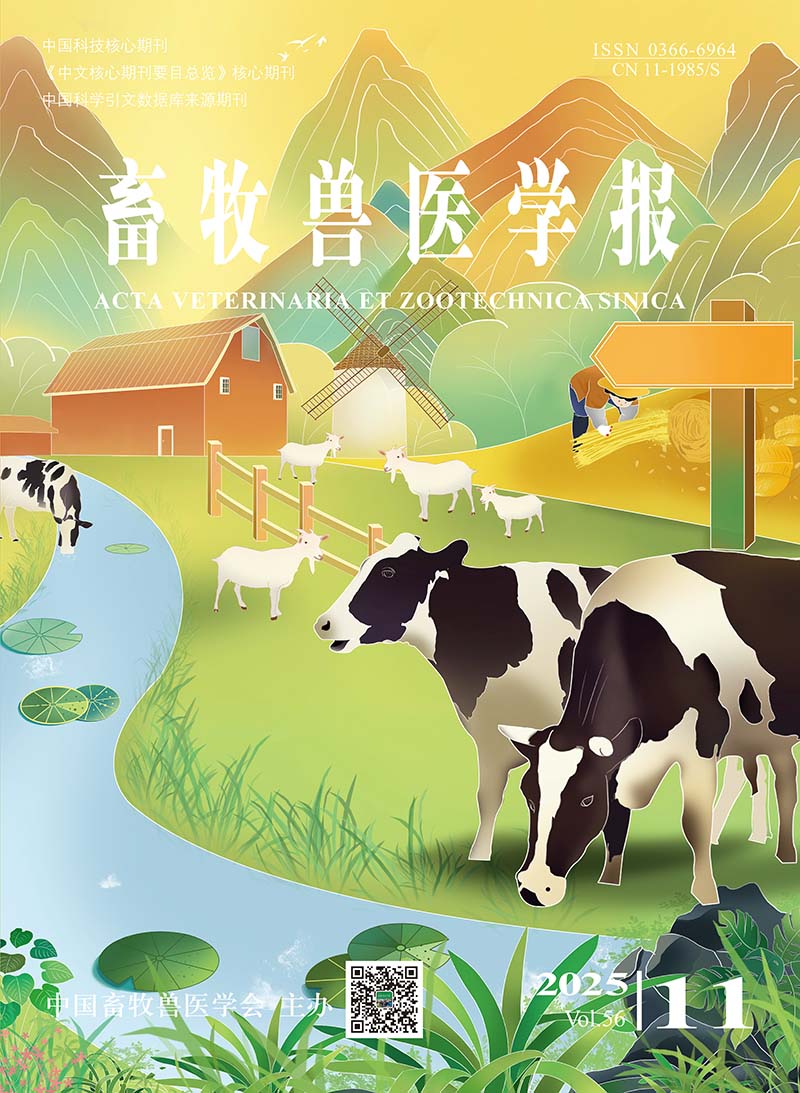-
SNP Genotyping of Important Economic Traits, and Population Genetic Structure in Different Local Pig Breeds
- TAO Xuan, HE Zhiping, LIANG Yan, YANG Xuemei, LEI Yunfeng, WANG Yan, HU Zihui, LIAO Kun, XIAO Xianxun, GE Sang, MA Guiyun, JIRONG Danzeng, AO Xiang, LÜ Xuebin, GU Yiren
-
2022, 53(10):
3358-3367.
doi:10.11843/j.issn.0366-6964.2022.10.009
-
 Abstract
(
374 )
Abstract
(
374 )
 HTML( )
HTML( )
 PDF (7212KB)
(
286
)
PDF (7212KB)
(
286
)
-
References |
Related Articles |
Metrics
This experiment was conducted to study genotype distribution of SNPs associated with important economic traits, and inter-population genetic structure in 7 local pig breeds in Sichuan province and Tuhe black pig in Shandong province. The single nucleotide polymorphism (SNP) of 8 pig breeds was measured using the porcine 50K SNP bead chip, which include 23 Chenghua pigs, 26 Ya'nan pigs, 60 Qingyu pigs, 57 Neijiang black pigs, 151 Yacha pigs, 57 Wujin pigs, 51 plain Tibetan pigs, 109 plateau Tibetan pigs and 28 Tuhe black pigs (562 healthy pigs in all). Next, data quality controls and genotypes related to 7 economic traits were performed by employing Plink and R software. Cluster analysis and principal component analysis (PCA) were conducted by Mega X and Plink softwares, respectively. The population genetic differentiation index (Fst) was calculated by VCFtools software and to analyze the genetic relationship between populations. The results showed that the proportion of non-advantage genotypes of feed intake, sour meat and stress traits were all lower than 2.20% in local pig breeds in Sichuan province, while the proportion of non-advantage genotypes of resistance to piglet diarrhea, FCR, boar semen quality and multi-rib were 8.99%, 11.80%, 73.97% and 95.32%, respectively. In Tuhe black pigs, q allele of stress trait wasn't existed, the proportion of non-advantage genotypes of feed intake and sour meat traits both were 3.57%, while the proportion of non-advantage genotypes of boar semen quality, resistance to piglet diarrhea, FCR and multi-rib were 39.29%, 50.00%, 82.14% and 92.86%, respectively. Clustering and PCA showed that a relatively distant genetic distance appeared between Tuhe black pigs and Sichuan local pig breeds, and Yacha, Wujin, Neijiang and Tibetan pigs (plain and plateau) were clustered into one group respectively, indicating that the population hierarchy among breeds was obvious. In addition, Ya'nan, Chenghua and Qingyu pigs were clustered together. The Fst index showed that there was a high genetic differentiation between Yacha and Qingyu pigs, both of which belong to Huchuan mountain pigs. The proportion of non-advantage genotypes of feed intake, sour meat, stress, resistance to piglet diarrhea and FCR traits were low, while that of boar semen quality and multi-rib traits were high. In Tuhe black pigs, the q allele of stress trait wasn't existed, and the proportion of non-advantage genotypes of feed intake and sour meat traits were low, while that of boar semen quality, resistance to piglet diarrhea, FCR and multi-rib traits were high. Population genetic structure results showed that the Yacha pigs and Qingyu pigs were classified as Huchuan mountain pigs is still debatable.






